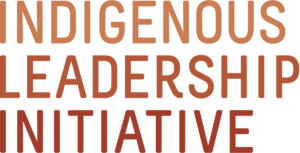COP16 Spotlight: Indigenous-Led Conservationin Canada
October 21, 2024
The United Nations Biodiversity Conference, or COP16, is the first major convening since 196 countries adopted the Global Biodiversity Framework in Montreal two years ago. It is known as the “implementation” COP, where countries must demonstrate how they plan to achieve the ambitious goals they committed to, including protecting 30% of lands and waters by 2030.
One of the best ways to move from vision to reality is to support Indigenous-led conservation. In Canada alone, Indigenous Nations lead the biggest conservation initiatives in the country.
The Government of Canada recognizes the central role of Indigenous-led conservation in sustaining biodiversity. Canada’s national biodiversity strategy and action plan states, “There is no path to achieving our 2030 targets without the expertise and leadership of First Nations, Inuit, and the Métis Nation, and transformative change must centre bold, Indigenous-led measures.”
Respecting this leadership and making sustained investments in Indigenous-led solutions will enable Canada—and other countries around the world—to turn words into action and sustain biodiversity into the future.
Indigenous Nations Lead the Creation of Protected Areas
Indigenous Nations are at the forefront of protecting lands in Canada.
About 90% of protected areas established in Canada in the last two decades have been established as a result of Indigenous partnerships or Indigenous leadership.
Many Indigenous Nations are creating Indigenous Protected and Conserved Areas (IPCA). IPCAs take many forms, but they share these common elements:
They are Indigenous led.
They represent a long-term commitment to conservation.
They elevate Indigenous rights and responsibilities.
IPCAs reflect Indigenous laws and knowledge systems. They support Indigenous cultures and languages and foster community wellbeing. They also maintain healthy landscapes, animals and plants, and massive storehouses of carbon.
Indigenous Nations Offer Biggest, Most Ambitious Conservation Vision
In the Northwest Territories alone, Indigenous Nations have finalized three large-scale IPCAs; taken together they total over 50,000 sq km—about the size of Coast Rica.
The Łutsël K’é Dene First Nation finalized Thaidene Nëné in 2019; spanning over 10,000 square miles of boreal forest, tundra, and caribou grounds east of Yellowknife, NWT, it includes a national park and a territorial park. It is one of the largest protected areas in North America.
The Dehcho First Nations passed a Dene law in 2018 creating the Edéhzhíe Dehcho Protected Area, then finalized a partnership with Canada to also designate it as a National Wildlife Area. Edéhzhíe holds great significance for Dehcho culture and identity.
The K’asho Got’ıne northwest of Yellowknife led the protection of Ts'udé Nilįné Tuyeta as a combined IPCA and territorial park. Its rich boreal wetlands sustain waterfowl and songbirds that migrate across the hemisphere.
Momentum Is Accelerating
Scores of Indigenous Nations are in the process of creating additional IPCAs. Taken together, these proposed areas could conserve over 500,000 sq km.
Over 25 IPCA proposals were funded by the federal government as part of Canada’s strategy for meeting biodiversity commitments.
In northern Manitoba, for instance, four Indigenous governments have proposed protecting 50,000 sq km of the Seal River Watershed. The watershed holds 1.7 billion tonnes of carbon—equivalent to 8 years’ worth of ghg in Canada.
Prime Minister Trudeau has said repeatedly that partnerships with Indigenous Peoples are central to Canada reaching the 30x30 target.
In August 2021, Canada announced $340 million in funding to support Indigenous Protected and Conserved Areas (IPCA) and Guardians programs—its biggest investment to date in Indigenous-led conservation.
In December 2022, Prime Minister Trudeau announced $800 million for four region-wide, Indigenous-led conservation and stewardship initiatives at COP15 in Montreal.
Indigenous Stewardship Sustains Intact Healthy Lands
Indigenous Guardians are trained experts who manage lands and waters on behalf of their communities. They restore animals and plants, manage protected areas, and monitor and implement environmental protection plans on development projects.
The Guardians movement has grown exponentially in recent years: In 2016, there were about 30 Guardians programs. Now there are over 200 programs on the ground.
The First Nations National Guardians Network, launched at COP15 as the first national Indigenous-led stewardship network in the world—now administers federal funds for Guardians and recently announced funding for 80 Guardians initiatives.
Many Guardians programs help monitor IPCAs. The Dehcho First Nations led the establishment of the Edéhzhíe Dehcho Protected Area/National Wildlife Area in 2018. Members of the Dehcho K’ehodi Guardians co-manage the site, testing water quality and monitoring woodland caribou, migratory birds, and cultural sites.


